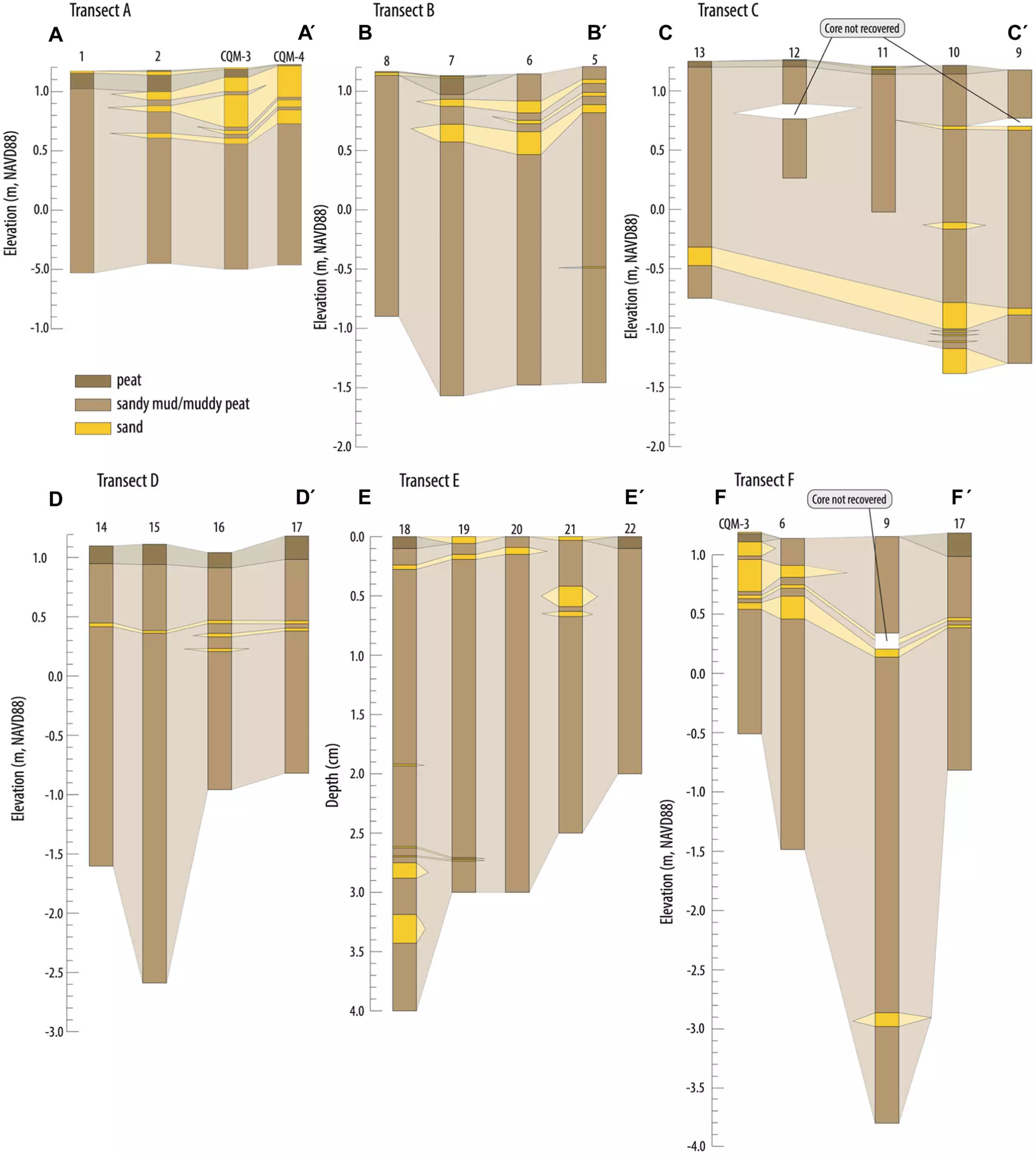In a groundbreaking approach, researchers from Rutgers University-New Brunswick have harnessed cutting-edge techniques to peer deep into the geological past, uncovering signs of hurricanes that date back more than 400 years. This innovative research, published in the Journal of Quaternary Science, significantly alters our understanding of storm patterns and their relation to climate change by analyzing sediment layers found in New Jersey’s Cheesequake State Park wetlands. The implications of these findings extend beyond a mere historical record; they present a new frontier in climate science, offering insights into the frequency of hurricanes and potential future shifts as the planet warms.
Previously, understanding hurricane occurrences relied heavily on modern instrumentation like tidal gauges and historical sources such as shipping logs and newspapers. However, these sources often fail to provide a comprehensive view of storm frequencies over long periods. By investigating sediment deposits—particularly “overwash deposits” that result from storm surges—this research fills critical gaps in our knowledge of extreme weather events that have shaped coastal ecosystems long before modern recording techniques began.
Unlocking History Beneath Our Feet
The study led by Kristen Joyse, a sedimentologist, involved meticulously extracted sediment cores that reveal a layered history of storm deposits within the wetlands. The researchers discovered eight distinct layers that served as evidence for intense historical weather events, with notable findings that included a storm as far back as 1584. Such discoveries not only challenge existing timelines but also enrich our geological archives of natural disasters, allowing for a more nuanced understanding of climatic changes over centuries.
Joyse emphasizes the importance of reconstructing these storm histories, as they allow scientists to look further back than what instrumentation permits. Historical data have their limitations, as extreme events documented tend to reflect only significant storms known to past societies, often omitting lesser storms that may have been equally impactful. By analyzing the physical evidence stored within sediment, researchers open a window into a time when hurricanes made their mark on the landscape without leaving a written record.
The Methodology Behind the Discoveries
The team employed intricate methods to ensure the accuracy of their findings. By comparing sediment core samples with contemporaneous tidal gauge records, they established a juxtaposition between geological evidence and recorded water levels to ascertain the validity of their data. Notably, they tracked the ages of sediment layers through a combination of radiocarbon dating and analysis of pollen and heavy metal concentrations. This detailed approach affirmed that several storm deposits predated available tidal gauge records, thereby highlighting significant storms that occurred without documentation.
Interestingly, while the sediment samples captured evidence of four major storms from the modern era, the researchers acknowledged that not all extreme weather events were represented in their geological record. This discrepancy raises intriguing questions regarding the preservation potential of storm deposits and the factors influencing whether a storm’s impact is recorded in sediment.
Implications for Understanding Future Storm Patterns
One of the most crucial aspects of this research lies in its potential to bolster understanding of how climate change could reshape hurricane frequency. Joyse suggests that these sediment records will pave the way for better hypotheses related to storm patterns in the face of changing environmental variables. The knowledge gleaned from these sediment analyses could inform policies aimed at coastal resilience, ultimately guiding communities in managing their vulnerabilities to future storm events.
Furthermore, this study sets the stage for a deeper inquiry into the dynamics of storm preservation. Questions abound: Why do certain storms leave a more indelible mark on our geological memories than others? How do shifts in climate influence the likelihood of a storm being documented through sediment analysis? As scientists probe these queries, they deepen our collective understanding and prepare us for adapting to the implications of change.
A Legacy of Knowledge for Future Generations
The efforts of Joyse and her colleagues, including various collaborating scientists from institutions such as Rowan University and East Carolina University, signify a pivotal moment in paleo-climate research. Their work is not just academic; it holds the potential to influence practical applications in disaster preparedness scenarios, thus serving humanity in tangible and necessary ways.
In a world rapidly transforming under climate pressures, it is more important than ever to decipher the messages locked in our planet’s geological past. This innovative approach to studying sediment offers a beacon of hope in grasping the ever-increasing complexity of natural disasters, equipping researchers, policymakers, and communities with the insights required to navigate the unpredictable landscape of our future.

